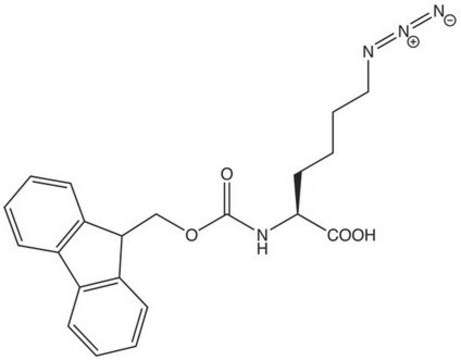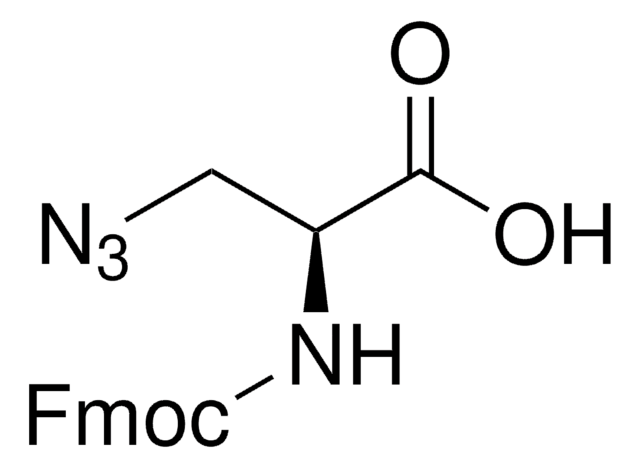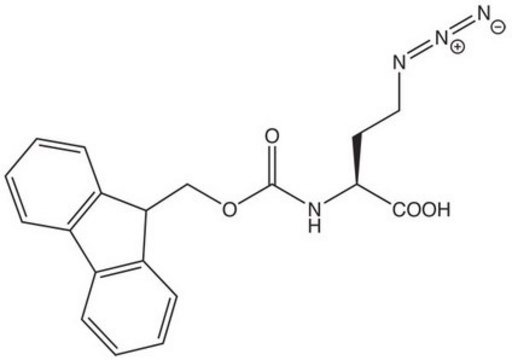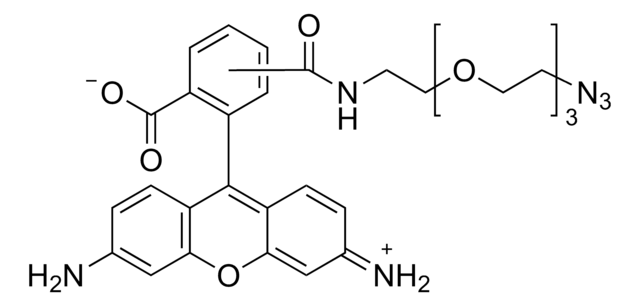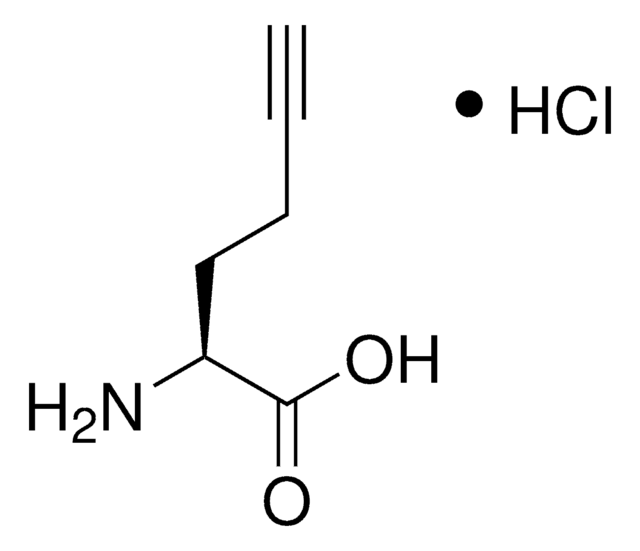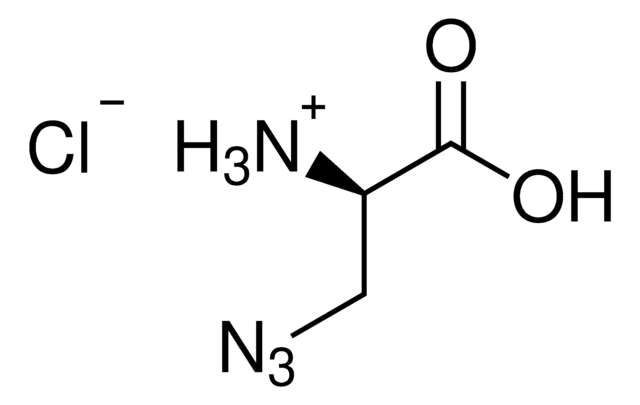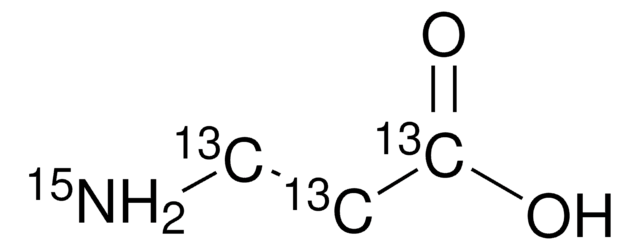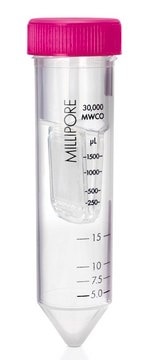900892
L-Azidohomoalanine hydrochloride
Synonym(e):
AHA
About This Item
Empfohlene Produkte
Form
powder or crystals
Qualitätsniveau
Eignung der Reaktion
reaction type: click chemistry
mp (Schmelzpunkt)
139 °C
Lagertemp.
−20°C
InChI
1S/C4H8N4O2.ClH/c5-3(4(9)10)1-2-7-8-6;/h3H,1-2,5H2,(H,9,10);1H/t3-;/m0./s1
InChIKey
MHHYJRIDKLZZEO-DFWYDOINSA-N
Verwandte Kategorien
Anwendung
Ähnliches Produkt
Signalwort
Danger
H-Sätze
Gefahreneinstufungen
Self-react. C
Lagerklassenschlüssel
5.2 - Organic peroxides and self-reacting hazardous materials
WGK
WGK 3
Flammpunkt (°F)
Not applicable
Flammpunkt (°C)
Not applicable
Analysenzertifikate (COA)
Suchen Sie nach Analysenzertifikate (COA), indem Sie die Lot-/Chargennummer des Produkts eingeben. Lot- und Chargennummern sind auf dem Produktetikett hinter den Wörtern ‘Lot’ oder ‘Batch’ (Lot oder Charge) zu finden.
Besitzen Sie dieses Produkt bereits?
In der Dokumentenbibliothek finden Sie die Dokumentation zu den Produkten, die Sie kürzlich erworben haben.
Unser Team von Wissenschaftlern verfügt über Erfahrung in allen Forschungsbereichen einschließlich Life Science, Materialwissenschaften, chemischer Synthese, Chromatographie, Analytik und vielen mehr..
Setzen Sie sich mit dem technischen Dienst in Verbindung.
